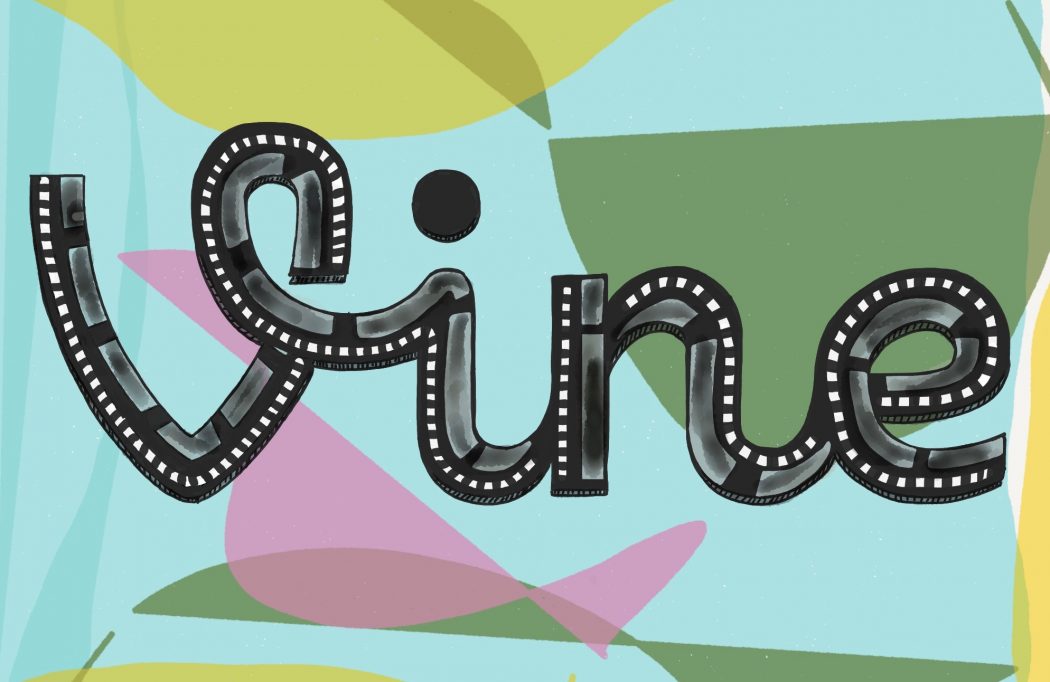me randomly thinking of a vine i saw 3 years ago: https://t.co/hD9mfumKq6
— 𝐤𝖔𝖇𝐲 ♥ (@kobychill) November 11, 2017
… Any longer, and it would’ve worn out its welcome. Vine was founded in June of 2012 and died in October of 2016, but didn’t it feel like seven seconds? For a generation of teens, Vine was in existence for four years of school, and likely it was pivotal to their education. I suspect that this is why so many of us look back so fondly on the Vine era, and why it’s left such a mark on the millennial understanding of media. In most “adult” circles however, vine is decried as the ultimate example of the millennial degradation of art, that our attention spans have lowered so much that we can only handle seven seconds of video. But let’s loop back around and look deep at what made Vine so special.
Seven Second Cinema
ARVE error: Mode: lazyload not available (ARVE Pro not active?), switching to normal mode
When Raoul Coutard and Jean-Luc Godard shot Breathless on the streets of Paris with no money for a tripod or a boom mic, they learned that great art blooms from the fertilizer of material limitation. With Vine you’ve only got seven seconds and an iPhone; no time to waste on anything unessential. There’s a certain aesthetic that develops from this limitation: shots have to be clear enough to register immediately, edits have to rush the vine along (if they’re present at all) and you’ve really only got time for one joke. You can’t do a song parody on vine, but you can make a joke about a single line of a song, for instance. Some are straining to stay within seven seconds, but sometimes they make you wait for it. Some are conversational and naturalistic and some are dedicated to a single memorable image or sound. No idea is too small to fit in seven seconds, but if you think seven seconds is too short for heartbreak, existential introspection, and political commentary, you’d be mistaken.
Brevity is the soul of wit, and as it happens, a visual joke is the fastest joke to tell. Success on vine necessitates a comfortable literacy with shots, cuts, and screen space, enough to manipulate them for comedic effect. For this reason, Vine is a goldmine of visual comedy, offering more formal mastery and invention than hollywood and TV have given us– the most basic vine of all, the cereal vine, is a visual joke, and it’s all up from there. The “conversation” Vine template displays how adept the Vine generation is at staging and recognizing shot-reverse-shot. One of my favourite Vine jokes is that in this conversation format, the second character is differentiated from the first by their wardrobe, and so they may be wearing a moustache, or a hat, and sometimes it gets weird. Think, for a moment about how abstract and dissociating of a joke this is.
Some vines have a physical comedy choreography to rival Chaplin, some have montage directly descended from Eisenstein (when the edit isn’t downright Godardian), some use offscreen space in a way that’s downright Bressonian, and some use onscreen space in a way that has no filmic analog. You’d think that cinematic circles would respond to this, but those who decry the downfall of visual comedy in the hollywood film are quick to dismiss the vine, because they’re ignorant of the invention in its borders. Of course there are artsy vines, recognized for their sketching or their editing, and many people recognize these vines as art without recognizing the vine as an art form. But these vines are never the ones people rewatch, because they fully reveal themselves after one iteration; they form a perfect loop only for the sake of it. Critically, they all belong to other forms: claymation, animation, music. But from the wholesome to the disturbing to the surreal, comedy vines are supreme. Since a vine must be watched and rewatched, it can take risks. Vines are indeed the closest of all cinematic works to objects, which you can hold and touch and look at from all angles. In other words, Vine materializes cinema.
A Vine for the Voiceless
ARVE error: Mode: lazyload not available (ARVE Pro not active?), switching to normal mode
Speaking of materialism, let’s talk about how many of our most beloved vines are about being poor, broke, or unable to afford chicken nuggets. It’s no coincidence that so many viners, and the majority of the most famous viners, were people of colour, women, and people in poor communities. Vine contains the smallest amount of artistic and financial barriers to filmmaking; it’s the closest cinema has ever come to a truly democratic meritocracy–though you could always just buy revines from King Bach, but nobody who truly got big on vine needed to do that. In creating that space where no idea is too small, no person is too small, no matter their situation, to get a laugh or a revine, as long as they’ve got a phone. But it’s not just a diverse space, some of the most famous vines take aim at race, police abuse, sexuality, the expectations of masculinity, and poverty directly. Vine was young and full of energy, so it was progressive, radical, and democratic in a way no other cinematic community could be (certainly not youtube).
Consider this as proof of that radicalism: it’s impossible to make a successful vine spambot or vine advertising account (and they have tried). Vine is all of the democracy of twitter with none of the corruption. You need to be authentic, and because of the camera, the edit, and the time limit, authenticity is impossible to fake. Politicians, with their twitter accounts run by interns, can never have a vine run by interns, and so when a politician vines the result is often awkwardness or a meme. When you vine you have to be equally bold and honest. Its limitations are clear and concise, totally constricting, yet within its gates one is totally free to break out of the codes. Sure there are genres of vine, and indeed “vine auteurs”, but they are islands in an ocean of idiosyncrasy. On vine, genre is only codified so that it can be subverted. There are no pillars to hold up a superstructure, and nothing stays constant for longer than seven seconds. Thus the act of watching a vine is an act of cultural participation in a more immediate way than anything else. Democratic, eh?
The other critical aspect of vine is the lack of a comment section, or any type of networking aspect. You can’t reply, you can’t do anything except like or revine. If you want to talk about vine you have to really talk to people, or make a vine yourself. It’s a true internet community, and a wholesome one. Vines that make fun of people are more good natured than youtube videos that do the same, and Vines aren’t mean spirited, many of them are about finding comfort in one’s image, about loving oneself. When we film something we certify its presence, we say “this deserves to be filmed”. Vine tells us that our smallest observations, our strayest thoughts, and our most marginalized people are worthy of a certificate, a magnifying glass and an infinite loop. Youtube may currently be recognized as a home for cinema and academia, but Vine is too populist and unpretentious (and perhaps too diverse) to be recognized in the same way. Remember what they say about great art and limitations.
Where are they Now?
ARVE error: Mode: lazyload not available (ARVE Pro not active?), switching to normal mode
Retrospect is a funny filter. In the moment it was obvious who the biggest vine stars were: King Bach, Brittany Furlan, Logan Paul, the ones who charged $25,000 for a revine and who all lived in the same building in L.A. But time has eroded their celebrity and revealed the underdog brilliance of Gabriel Gundacker, Demi, Miel, Christine Sydelko, and other smaller viners who pushed the platform to its limit. In its very design, Vine is an app for the underdogs. In that way, perhaps Vine died for the same reason that Vine lived: since it resisted all authority by its very nature, it resisted the authority that gives an app financial success. If you can’t bot Vine, and you can’t advertise on Vine, then you can’t preserve vine in a neoliberal economy where companies and advertisers are participants in social media. In a quite literal sense, Vine was too good for this world.
In its current state, Vine exists as a fossilized diorama of constantly moving mementos, little cinemagraphs that were the culmination of technology and democracy, and yet still only the beginning. Vine lives on in its influence, whenever we recall one in our day to day, and whenever we watch a film that’s been directly influenced by them. We’re only beginning now to see the influence Vine had on our culture. Just like the greatest works of art on its platform, Vine came into existence with a bang and left just as soon, inventing a language and a genre, and now all that remains is an infinitely looping record of its radical invention. Any shorter, and it wouldn’t have had such a seismic impact on the world…
this is the human experience pic.twitter.com/w5fi8smgFY
— chloe 🌙 (@echochlo) February 4, 2018








